"Our digital God will be a CSV file" - Elon Musk
This application represents a chat-based platform designed to offer dynamic interactions with users by processing inputs and delivering personalized responses. At its core, it employs a Language Learning Model (LLM) to comprehend and generate text, creating an engaging user experience. This system is a work in progress, demonstrating functionality while being open to future enhancements and optimizations.
-
Interactive Chat Interface with Gradio: Utilizes a basic gradio interface for user interaction, ensuring ease of use and accessibility.
-
LLM Engine - llama-cpp-python: Incorporates the llama-cpp-python engine, a wrapper for llama.cpp, to leverage LLM capabilities for generating responses.
-
Session and Context Management: Manages sessions with unique IDs, maintaining a coherent conversation flow. A basic sliding memory system is in place, subject to future expansion for enhanced context handling.
-
Dynamic CSV Action Sequencing: Supports sequencing prompts based on a basic CSV chain of actions, allowing for structured interaction flows.
-
File Interaction: Basic implementations are in place for interacting with CSV, PDF, and ePub files, enabling diverse data handling capabilities.
-
Batch Sequencing: Supports the batching of sequences for efficient processing.
-
Local LLM Utilization: Focused on using LLM locally, aiming for a balance between functionality and exploratory development without relying on external platforms like langchain.
-
GGUF Format for Prompts: Adopts the GGUF format for LLM prompts, facilitating structured and effective prompt engineering.
-
Procedural Prompt Chaining with Tools: Enables procedural chaining of prompts with tools for web scraping, internet search, etc., enhancing task automation capabilities.
-
Guided Outputs with Grammar GNBF File: Utilizes a grammar GNBF file to guide outputs, creating an ecosystem suitable for beginners to advanced users.
Some work in progress documentation can be found here
Below are various screenshots that illustrate the application's functionalities:
This is the primary interface that users interact with when they start the application.
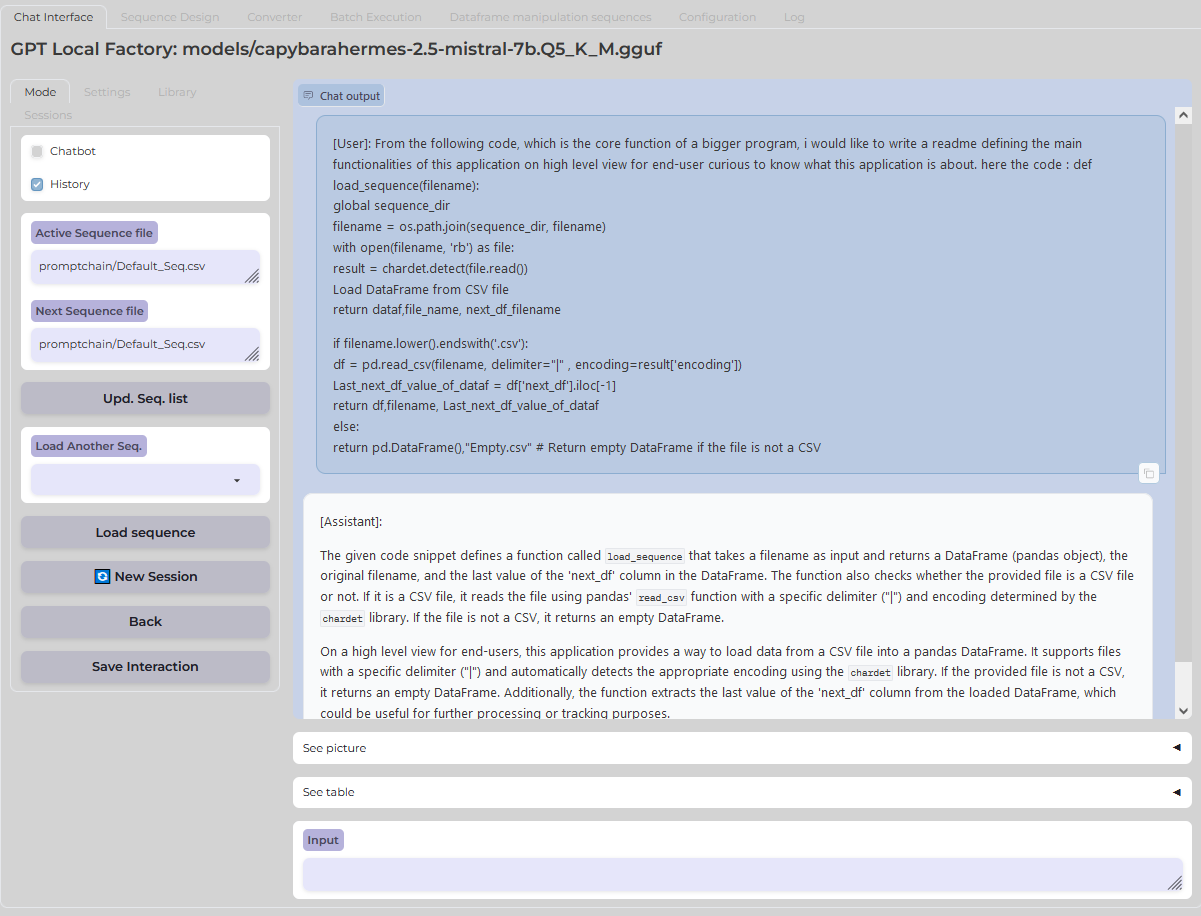
Here you can see the batch execution feature which allows for multiple actions to be performed in sequence.
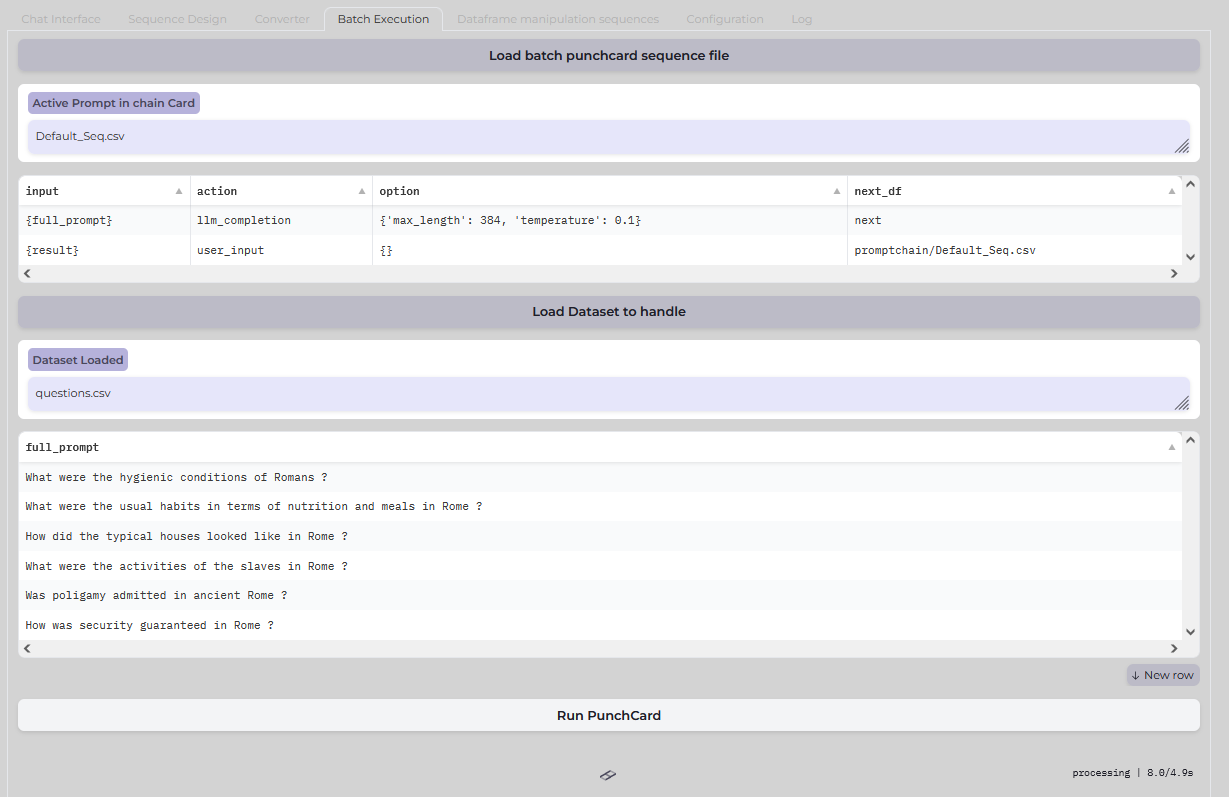
After batch execution, the results are displayed as shown in this screenshot.
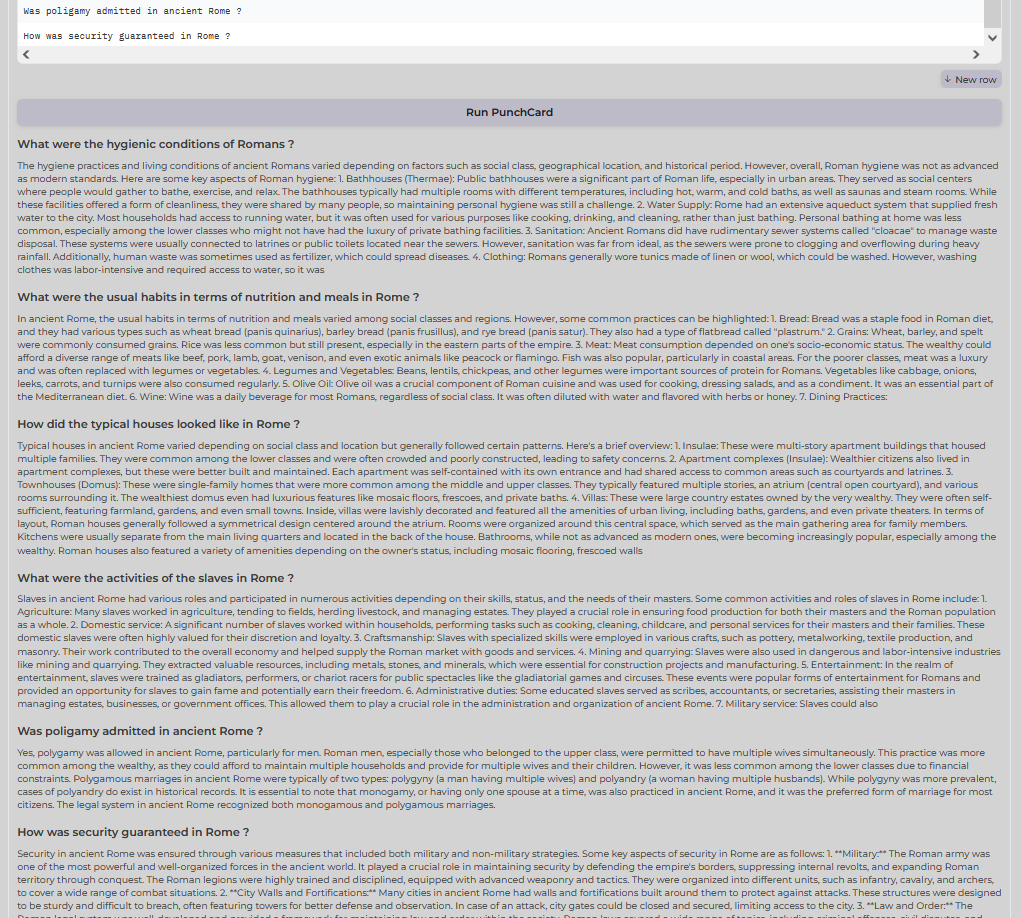
This screenshot shows the configuration settings that can be adjusted by the user.

For converting data structures, the JSON schema converter tool is shown here.
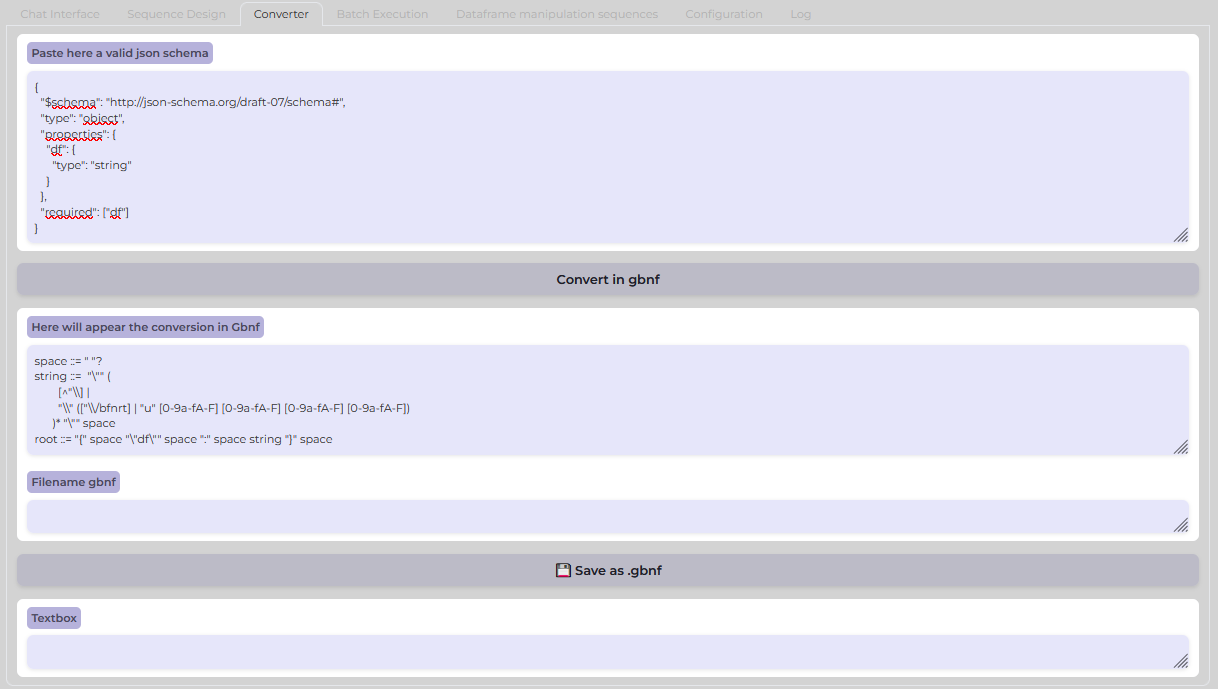
Here's how the main screen looks when the netsearch function is being used.
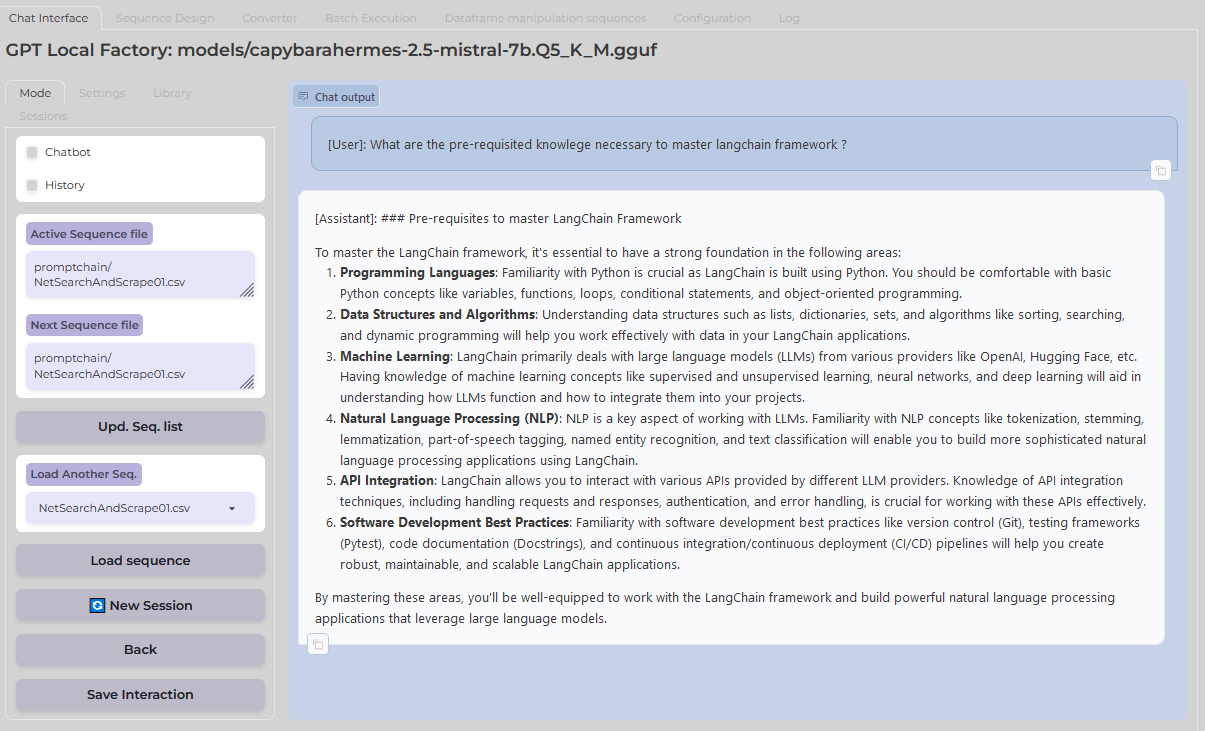
The application provides a log of the netsearch actions, as seen in this screenshot.
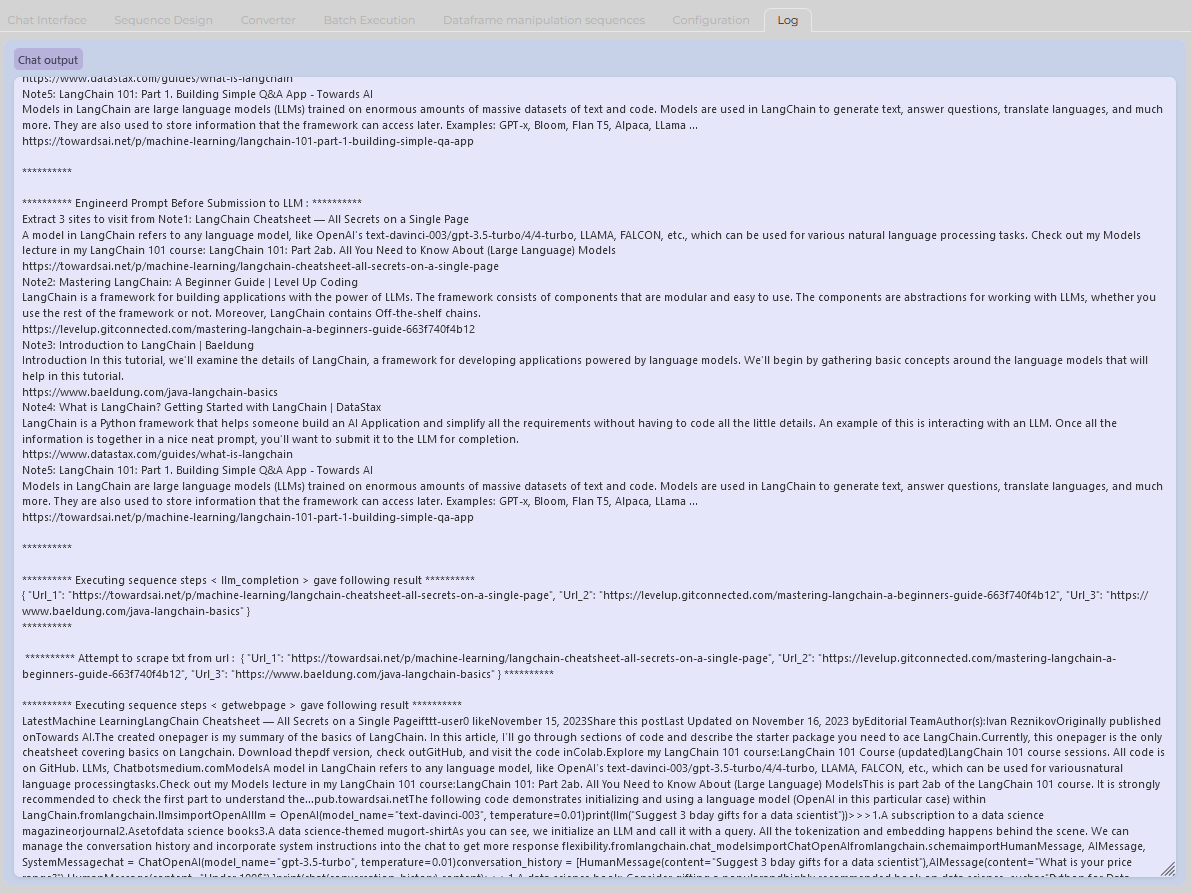
This image illustrates how netsearch sequences can be constructed and managed.
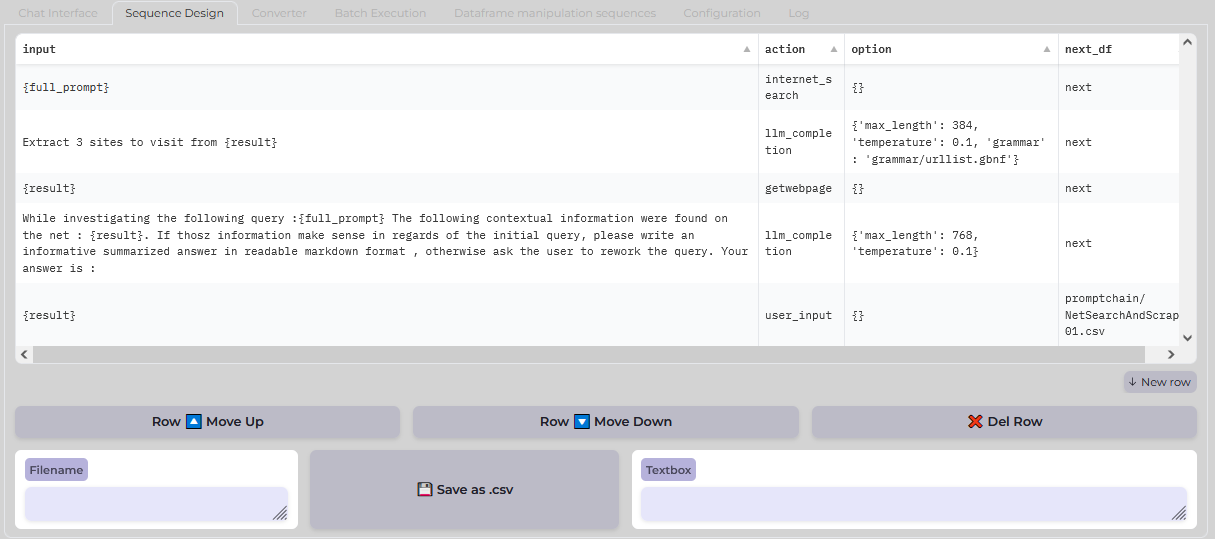
This is the sequencing loaded by default. User can create their own csv which allows more complex operations.

This application is currently in a workable yet experimental phase, potentially containing bugs due to its work-in-progress nature. The primary focus is on leveraging local LLM for basic tasks within a chatbot/instruct mode and advancing prompt engineering techniques. By chaining prompts procedurally with tools, the system aims to facilitate learning and automation for a range of tasks using the power of LLM artificial intelligence engines.
Designed for users ranging from beginners to those at more advanced levels, this platform serves as a tool for exploring and leveraging the capabilities of LLMs. Whether for task automation, information retrieval, or learning advanced prompt engineering techniques, it offers a foundational yet expandable environment for engaging with artificial intelligence in practical scenarios.
While the current implementation provides a solid foundation, future enhancements are anticipated to include more sophisticated memory management, broader file interaction capabilities, and refined batch processing techniques. The goal is to evolve this app into a more robust and versatile tool that can accommodate an expanding array of tasks and experiments, making the most of LLM technology in a local setting. But it may be deprecated in a few month at the pace this technology goes. This app reflect my own learning curve into this technologies made with support of GPT. Code is more a total shame 80's punkcode than anything correct, probably buggy and not meant for high end production. I'm not a coder nor a dev, i just use machines. I'm a poor lonesome cowboy in this project. If this inspire you further, i would be grateful. Don't expect too much support or guaranteed evolution here. This all depends of my private life balance.
This guide provides instructions for setting up a Python environment suitable for running the GPT-Sequencer project. Whether you have Git installed or prefer downloading the repository as a ZIP file, follow these steps to get started.
- Ensure you have Conda installed on your system.
- An internet connection is required to download the project files and requirements.
Run the following command to create a new Conda environment named (for example) Gptenv with Python 3.11:
conda create -n Gptenv python=3.11
conda activate GptenvChange to the directory where you want to clone the repository, and then clone it using Git.
mkdir Gptenv
cd Gptenv
git clone https://github.com/dbddv01/GPT-Sequencer.gitDownload the repository as a ZIP file from https://github.com/dbddv01/GPT-Sequencer, extract it to your desired location, and navigate into the extracted directory.
mkdir Gptenv
cd Gptenv
# Use your file manager or another method to extract the ZIP file hereInside the GPT-Sequencer directory (whether cloned or extracted from a ZIP file), install the required Python packages.
cd GPT-Sequencer
pip install -r requirements.txt- You must install the llama-cpp-python package, depending on your configuration, use something similar to the following command to install it.
- The example hereunder deals with an installation under windows, with AVX2 compliant cpu, nvidia gpu with a cuda version 12.1, and a python version 3.11
python -m pip install llama-cpp-python --upgrade --prefer-binary --no-cache-dir --force-reinstall --extra-index-url=https://abetlen.github.io/llama-cpp-python/whl/cu121- then you may get a conflict due to numpy verson 2.0.0 isntalled during the llama-cpp-python wheel installation. (e.g. gradio 4.29.0 requires numpy~=1.0, but you have numpy 2.0.0 which is incompatible).
- This can be solved by installing numbpy version 1.24.2 via
pip install numpy==1.24.2For further information please consult https://github.com/abetlen/llama-cpp-python/releases
- At this stage, a LLM .gguf file has to be put in place in the /models directory recently created.
- Explore the Huggingface model library and download what's convenient for you.
Finally, run the GPT-Sequencer Python script.
python ChatBot-GptSequencer.py